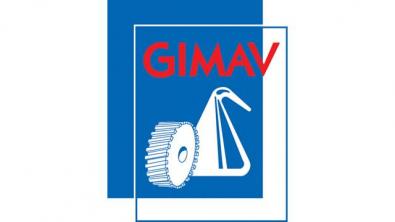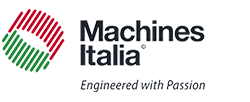At the annual members’ meeting held on 30 June 2017, GIMAV officially presented and shared the data on the Italian Flat Glass and Hollow Glass industry. The report, titled “The Italian industry of glass processing machinery, systems, accessories and special products in 2016” – provides a comprehensive and detailed annual snapshot of the industry, highlighting its structural characteristics, sales, production activity, domestic and export markets (the latter in particular were cross-checked with data published by Istat, the Italian National Institute of Statistical Surveys). The last survey by the Statistics Center of Gimav (a member of Confindustria, representing Italian manufacturers of flat and hollow glass processing machinery, systems, special products and accessories), revealed this was another year of recovery, made even more significant by the 2017 forecast for further growth in terms of sales, and stability in terms of exports and the domestic market.
The 2016 Industry Report provided insightful details. For the seventh consecutive year, the Italian glass (Flat and Hollow) machinery industry remained on a positive growth trend. More specifically, in 2016 overall sales increased by 5.9% from 2015. Flat Glass recorded outstanding growth, and was up 7.5% from the year before (when it rose by 6.7% from 2014), while Hollow Glass remained on the positive side with a 1.05% increase, despite a slight decrease vs the previous year, when it rose by 3.0% over 2014.
THE 2016 ITALIAN GLASSWORING INDUSTRY REPORT CAN BE EITHER DOWNLOADED OR VIEWED ONLINE BY CLICKING HERE
Interestingly, the trade balance reached 947 million Euros, a 6.63% increase from 2015. “This indicator – state Gimav’s top executives Aldo Faccenda (President) and Laura Biason (Director) – clearly highlights this sector’s uncanny ability to rebound from the effects of the economic-financial crisis that plagued the world, and long lingered in Italy. Today, at least for the glass machinery sector, we can say the crisis is over. The numbers show we are back where we were in 2008, and we are extremely pleased by it. We applaud the commitment of this large group of companies – small, medium and large – which managed to climb all the way back up through their unfailing determination, flair for innovation, and will to make up for the lost ground on international markets.“
Imports were 7% lower than in 2015 (when they decreased from 2014). Respectively, imports of Flat Glass plummeted (-37.22%), and Hollow Glass imports also decreased, but not as drastically. “This overall trend indicator - president Faccenda points out - highlights another important aspect: the domestic market clearly prefers Italian-made machinery “. The top 5 ranking countries for exports of glass processing machinery to Italy are Belgium (still at #1 although sales dropped sharply), France, Croatia (on the up), the United States (with on overall share of 7.5%), and Germany (in spite of a substantial reduction in sales to Italy). We should also note that our imports from China decreased by 19.29%, even though it remains in 8th place. Historically, exports have been the crowning jewel of the Italian glass machinery industry. In 2016 exports increased by 5.39% overall, with Flat Glass soaring by 7.93%, and Hollow Glass by 1.21%.
The European Union remained the primary export destination for Italian glass processing machinery, accessories and special products, with a 43% share of global market sales, while exports to extra-EU countries decreased.
The sales trend for North America recorded remarkable growth (over 45%), making the United States the #1 customer of Italian manufacturers (with 10.75% overall share, nearly 18% for Flat Glass), followed by Mexico (which ranks at #1 for Hollow Glass, with an exports share of nearly 12%), China, France, Germany, and the United Kingdom. “With regard to Flat Glass – explains Laura Biason, Director of Gimav – the rankings by share of Italian exports shows a drastic improvement for China, which ranked 46th in 2015, and climbed to #4 in just one year. This means that Chinese glass makers also recognize the impressive value of Italian glass processing machinery to achieve top quality results”. Still with regard to exports, we should mention two countries which – although strategically important and “dear” to the Italian manufacturers in the sector – in the last few years have been severely affected by economic-political instability, and are now showing interesting signs of recovery: Russia (which climbed from 20th place to 10th in 2016) and Brazil (in 12th place, with a 2.42% share).
Another step forward for Australia as well, which now holds a 2.25% share of overall exports, becoming the 13th largest importer of made-in-Italy machinery. “Awareness of the “total cost of ownership”, meaning the importance of considering the overall cost of the product/machinery, is spreading across the Italian and global corporate culture. To that effect – concludes the director of Gimav, Laura Biason – figures indicate that Italian machinery is starting to be perceived as having extraordinary value-added. In fact, although the initial purchase price may be higher, these machines last longer, require less maintenance, are highly customized, and perform work of excellent quality. They are an investment that costs less in the long term, and is more valuable. Hence it would be unreasonable and unrealistic to think or expect sales to climb back up to the pre-crisis levels, also given that since then industrial paradigms have changed. And it was during that very period of major changes, long before the Industry 4.0 era, that the Italian glass industry managed to reinvent itself, finding new sources of inspiration in extreme automation and cutting edge-technology”.
“In that respect – adds the president of Gimav, Aldo Faccenda – I feel it is my duty to express the wishes of everyone in the Italian glass industry. The Italian government incentives for machinery upgrades had an immediate, valuable effect on the domestic market, and also revitalized machinery manufacturing companies. And now, therefore, we stand united in asking our government to consider extending the incentives validity period, or at least extend the delivery deadlines beyond July 2018. A 7 month delivery window (December 2017 is the deadline for orders) is too tight for complex, highly customized and technologically advanced products, such as glass processing machinery. We intend to build a strong case and present it to government policy makers, thereby meeting the actual needs of the Italian market, and especially the needs of our industry. We are keenly aware of our importance as “drivers” of knowledge and technology in the glass market. Allowing our client companies to fully exploit this know-know effectively gives the sector, and our entire national economy, a huge competitive advantage”.
About GIMAV
Gimav is the Association of Italian manufacturers and suppliers of machinery, equipment and special products for glass processing. Set up in 1980 by a small group of businessmen, Gimav plays a fundamental role in the entire glass industry both nationally and internationally. As a member of Confindustria, Federvarie and Federmacchine, during its 25 years of activity, Gimav has considerably strengthened its representative presence in the entire glass processing industry and now plays an indispensable role in relations with all private and public institutions. The sales volume of Gimav member companies, accounts for approx. 80% of the industry’s total turnover and for 77% of total exports by Italian manufacturers of machinery, accessories and special products for glass processing. As a result of its efficacious and creditworthy activities, the Association enjoys the outstanding loyalty of its members, whose number has been growing steadily over the years. The first members were later joined by large industrial groups and, above all, by small and medium-sized companies which are the true face and the backbone of the industry. The importance of each participant, mutual respect and the fact that everybody is given the opportunity to participate and contribute to the Association’s political and management decisions have spawned a cohesive group with a strong international nature.


























